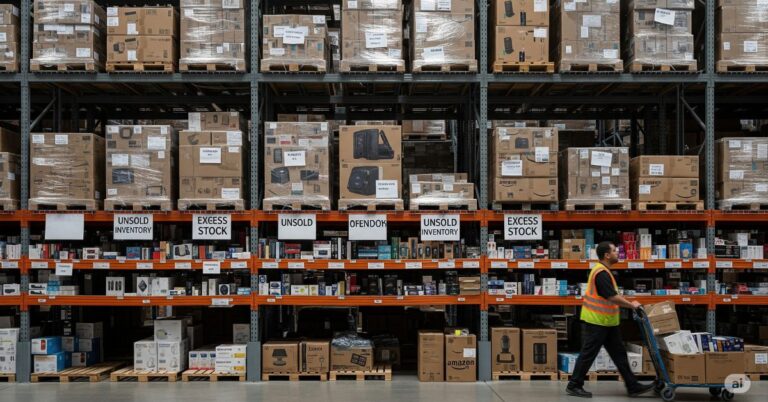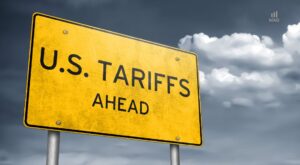
US and Canada sellers must review their settings before the September 30, 2025 deadline for FBA liquidations and donations, as the programs will make donations required and automatically enroll inactive accounts into liquidations.
Amazon sellers pay for every move their inventory makes. You pay for storage, you pay for returns, and now, you will pay for Amazon’s sustainability goals.
While Amazon promotes the environmental benefits of the new policy on FBA liquidations and donations, the financial reality for sellers is a loss of control and revenue.
With cash flow on the line, it is critical to understand the real impact of this change before it’s too late.
Amazon Confirms Enrollment Changes to FBA Liquidations and Donations
Peter C. Ecans, Substack Platform Professional"Amazon gains numerous advantages by leveraging this liquidation ecosystem."
A recent Seller Central news item announced significant enrollment changes for the FBA Liquidations and Donations programs. These updates, affecting sellers in the US and Canada, will take effect on September 30, 2025.
The policy shift introduces two primary updates for how Amazon handles sellers’ unsold and unfulfillable inventory. These changes will redefine the default actions taken on these products.
- FBA Liquidations Become the Default
If you have not configured your automated inventory settings, Amazon will automatically enroll your account in the Liquidations program. You can still prevent this by actively managing your FBA settings to choose other options, such as returning the inventory to you.
- FBA Donations Become Mandatory
The option to opt out of the FBA Donations program will be eliminated entirely. All sellers, including those who previously opted out, will be re-enrolled and required to participate.
The Liquidations program offers a way for sellers to recover a small portion of a product’s value. However, the Donations program provides no direct cash recovery for the items.
Amazon confirmed that there will be no changes to the fees for either program. The company frames these updates as part of its commitment to sustainability by extending product lifecycles and reducing waste.
What The FBA Policy Change Means for Sellers
An insightful breakdown on LinkedIn from Serj Topal highlights the significant impact these changes will have on a seller’s control and cash flow. The new defaults are often not in a seller’s best financial interest.
The liquidation process provides slow cash with low returns. Sellers can expect to receive only 5-10% of their product’s average selling price after a 15% fee and per-unit processing costs are deducted.
Furthermore, these liquidation payouts can take anywhere from 30 to 90 days to process. The mandatory donations program offers zero cash recovery, with only a potential tax certificate benefit for sellers in the US.
It is important to note that as of late August 2025, Amazon’s own Seller Central help pages have not been updated to reflect that donations will be mandatory. Additionally, items classified as hazmat, dangerous goods, or other restricted products will not qualify for either program.
To protect your assets and maintain control, sellers should take several proactive steps before the September 30 deadline. This involves a thorough audit of your current FBA settings.
- Audit FBA Setting
Review both your automated fulfillable and unfulfillable inventory settings immediately.
- Set SKU-Level Rules
Establish a clear hierarchy for handling items, such as prioritizing Grade and Resell or Returns before defaulting to Liquidations.
- Update Financial Models
Incorporate the potential recovery rates from liquidations into your Profit and Loss (P&L) statements to accurately project revenue.
- Monitor Settings Regularly
Some sellers report that Amazon’s settings can revert to the default, so it is vital to check them monthly.
Ultimately, this policy requires sellers to be vigilant in managing their inventory preferences. Failing to lock down your settings means you risk automatic liquidations or forced donations by default.
Amazon’s New Return Policy Adds More Pressure on Sellers
The new rules for FBA liquidations and donations follow another crucial policy update from earlier this month regarding FBA returns. This recent pattern of changes suggests a broader strategic shift by Amazon, prompting sellers to re-evaluate their FBA strategy.
Amazon quietly rolled out three new options within the Fulfillment by Amazon settings menu. These settings concern returnless resolutions, item evaluation, and perhaps most critically, the ownership of damaged inventory.
Each setting gives sellers new choices but also introduces significant risks if not configured correctly. The defaults are not always optimized for a seller’s profitability or control.
- Returnless Resolutions
This allows sellers to issue a refund without requiring a customer to physically return an item. It can be more profitable for products that are often unsellable upon return, saving sellers on return shipping and processing fees.
- Returned Item Evaluation
By default, Amazon assesses if a returned product can be resold. Disabling this evaluation means all returns are automatically marked unfulfillable and become ineligible for damage reimbursement from Amazon.
- Damaged Inventory Ownership
With the default setting, Amazon takes ownership of inventory it damages, provides a reimbursement, and can then resell the item. If disabled, the seller keeps ownership but forfeits any reimbursement and must pay to have the damaged item removed.
The change to damaged inventory ownership is particularly concerning for sellers. This new default setting effectively allows Amazon to profit from products they damage by reimbursing sellers at a low cost and then reselling the inventory themselves.
This recent shift in handling returns reduces a seller’s ownership rights and control over their own stock. This move, combined with the upcoming FBA Liquidations and Donations mandate, indicates a trend where sellers may need to diversify their strategy, potentially including direct-to-consumer services with a trusted Amazon agency to regain control.
How to Protect Your Margins Under the New FBA Rules
With Amazon tightening its grip on unsold inventory, proactive management is now critically necessary. Sellers must use every available tool to handle returns and overstock before their products fall into the new default liquidation and donation programs.
Strategies for High-Return Products
The first line of defense is to reduce the volume of returns that become unfulfillable. Analyzing why customers send items back can provide actionable insights to fix underlying issues.
- Analyze Return Data
Use the FBA Return Insights report in Seller Central to identify which products have high return rates and the reasons customers provide.
- Refine Your Listings
Improve product descriptions, images, and sizing information to set clear customer expectations and reduce preventable returns.
Actively Managing Overstock and Aged Inventory
Preventing inventory from becoming aged or overstocked is key to avoiding costly fees and forced liquidations. Amazon provides several tools within Seller Central to help sellers monitor inventory health.
- Monitor Your Inventory Dashboard
Regularly check your Inventory Performance Index (IPI), inventory age, and SKUs flagged with excess units.
- Use the Manage Excess Inventory Tool
This tool suggests specific actions for slow-moving products, such as price adjustments or creating removal orders.
- Automate Removals
Set up automated removals for aging inventory to avoid long-term storage fees, which can accumulate quickly.
- Balance Inbound Shipments
Follow Amazon’s restock recommendations to align your inbound shipments with your actual sales velocity, preventing the buildup of excess stock.
Third-Party Closeout Strategy
As Amazon’s FBA programs become more restrictive, sellers are finding better value with outside partners. In a recent newsletter, seller Jon Derkits shared his strategy for profitably handling end-of-life products.
His approach involves selling large lots of aging inventory (500-5,000 units) to a third-party liquidation partner instead of using FBA. The model uses a clear fee structure.
- Upfront Cost – A flat fee of around $100 to list the product lot.
- Commission – A 10% commission on the final recovered value.
This method converts a potential loss into “found money,” avoiding steep FBA storage fees for products that would otherwise be destroyed. Using a third-party partner is a powerful alternative that gives sellers better financial control over their end-of-life inventory.
By implementing these strategies, sellers can better control their inventory’s lifecycle and financial outcome. Taking these steps ensures that decisions about your products are made by you, not by Amazon’s new default settings.
Jordan McBain, McBain Recoveries"Make sure you have a reliable program in place to handle this inventory. From my clients experience the liquidation program is full of issues."






